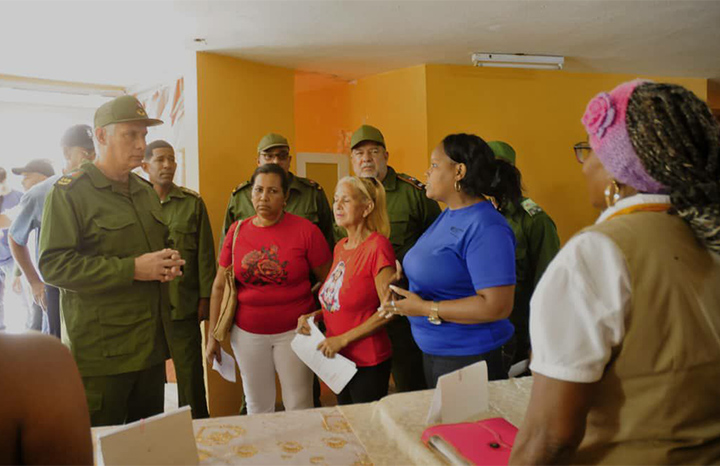Before the people gathered in the park of the Costa Rica community, and with the same revolutionary fervor as on November 30, 1956, when a group of combatants rose up in support of the Granma yacht landing, led by Fidel Castro, Miguel Díaz-Canel Bermúdez, president of the National Defense Council (CDN), told them that together we will move forward with the recovery.
The most important thing is that we are alive, Díaz-Canel emphasized, while acknowledging the progress made in repairing the damage caused by Hurricane Melissa. Manuel Marrero Cruz, member of the Political Bureau of the Party and Prime Minister of the Republic, along with other members of the Council of Ministers, were also briefed on the progress.
Accompanied by Yoel Pérez García and Alis Azahares Torreblanca, president and vice president of the Provincial Defense Council respectively, he expressed his gratitude for the outpouring of affection and support received, which, he said, motivates them to continue working.
Earlier, at the processing table set up in the local movie theater to assist those affected, the president of the National Defense Council inquired about the cases received daily. He learned that 100% of those affected—just over 700—had been visited, and of those, 438 cases had been addressed, with each case having its corresponding technical file completed.
They explained that they have a payment plan for the materials: 23 cases with subsidies, 14 loans requested, and 401 will pay in cash—the largest percentage. Meanwhile, 172 fiber cement roofing tiles were received and sold to 27 people.
Before his visit to the Costa Rica People’s Council, Díaz-Canel was at the June 14th Special School in Guantánamo City, where he inaugurated a hearing rehabilitation room that facilitates the learning process for some 30 children with cochlear implants, who are deaf or hard of hearing.
Yaima Salas Ruiz, the center’s director, specified that the room is equipped with 10 modern Lenovo computers, donated by the solidarity organization Cuba Sí of Germany.
She added that the technology, unique in the country for this type of education, allows for the stimulation of sounds in the children during auditory perception classes.
The equipment installed in the hearing rehabilitation room will also benefit the deaf community of Guantánamo, as these innovative practices will be incorporated into the services offered to students enrolled in mainstream education, as well as to adults receiving care at the Hearing Medical Center, who regularly attend the educational institution, he explained.
He detailed that the equipment has an approximate value on the international market of $450 each, in addition to the specific accessories, such as hearing aids and microphones, which have an additional cost. He emphasized their gratitude to the solidarity organization Cuba Sí for this altruistic gesture.
Díaz-Canel’s visit to the 14 de Junio Special School was prompted by an invitation from Brayan de Jesús Navarro Peña, a pioneer at the school, during the Sixth General Assembly of the Cuban Association of the Deaf, held in Havana last March.


